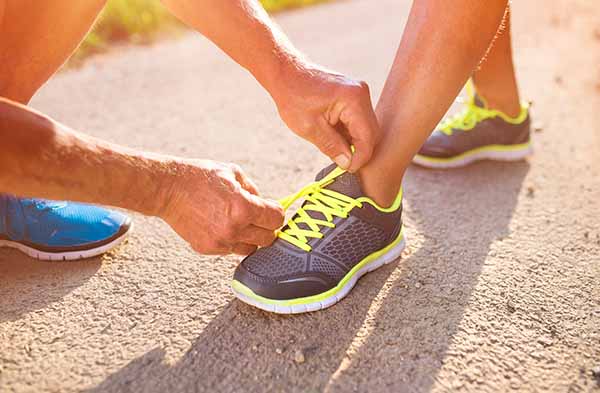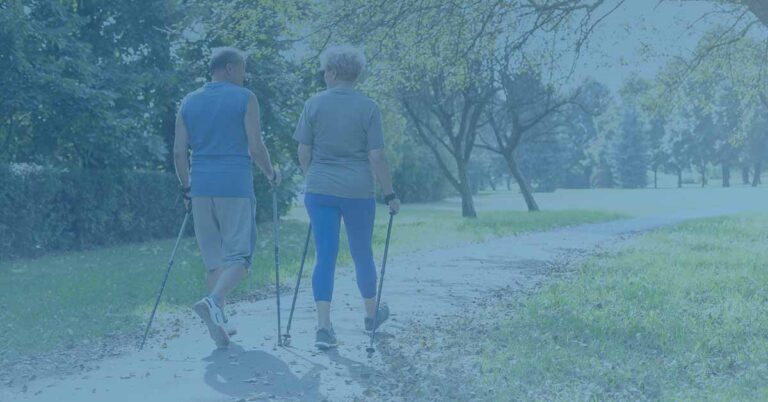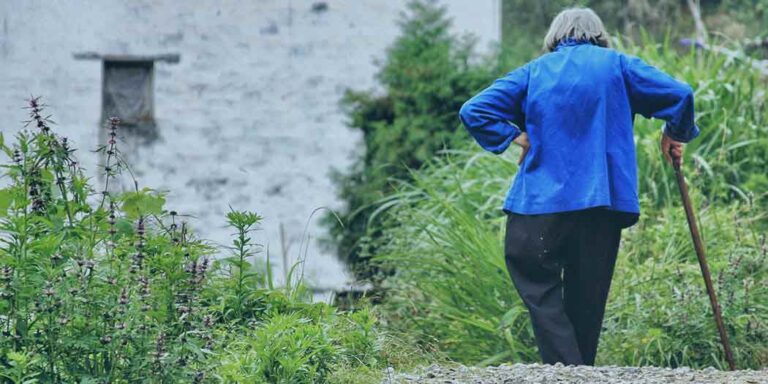12 Tips to Help you Start Running After 60 Years Old (Safely)
Should you run after 60? Can you start to run at 60? Yes, of course! Running at an older age is a fantastic way to IMPROVE your health.
Getting older doesn’t mean it’s time to start slowing down.
Staying physically active as you age has enormous health benefits: it helps manage body weight, strengthen muscles, enhance your sleep, and even improve your mental health.
No matter your goals, running is one of the best FULL-BODY workouts you can do, regardless of age.
Not sure where to get started? No need to be intimidated!
Let’s cover some tips to help you start running in your 60s.
1. Find the Right Shoes
First, find the right pair of running shoes.
Haven’t run in a while? You may be surprised at the advancements made.
Running shoes come in all sizes and shapes, from thick-soled trainers to sleek flats.
Proper shoes improve comfort, absorb impact, provide foot/knee/ankle support, and improve overall results.
Running shoes for older runners should be comfortable and not too tight.
Get a LARGE enough size.
It’s not the same as when we were young and told our running shoes had to be tight!
Your shoes should have ample padding on the heels and sides and space for all TOES.
You should have enough cushioning to keep your feet comfortable.

Laces are also different from when we were young. They are much easier to TIE and stay tied nowadays.
You can even replace the laces of your shoes with elastic lock laces. The fit is better, and you never have to lace your shoes again. Plus, they never untie while you run.
The best investment in running beside the shoes!
2. Proper Clothes Make Running Bearable
Running shorts and shirts are also essential when it comes to running gear.
You generally want equipment that is both lightweight and moisture-wicking.
Depending on your climate, getting some cold-weather running gear might also be good, including undershirts, sweatshirts, and leggings.
3. Keep Your Phone With You in Case of Emergency
It makes sense to carry your smartphone when you run.
You may have to use it to call for help in an EMERGENCY or consult a map if you get LOST.
But how to carry a phone safely?
Running belts, or FANNY PACKS, are the best option.
You can carry your smartphone, wallet, ID, and keys with a running belt.
There is no risk of dropping your phone. And you can keep your hands free!
4. Go Slow – Walk, Don’t Run
What? Can I walk on my runs?
When I first started running at the age of 60, I tried to run as much as possible. That was a mistake, and it didn’t end well. After a couple of weeks, I had to stop.
On my next try, I mixed walking and running. I mostly walked and only ran for short stretches. That kept me away from injuries.
You should always WALK for certain stretches of your route. Mix walk and run.
And there’s no shame in stopping to take breaks during a workout.
If running is not your thing, walking has enormous health benefits for seniors as well.
Think about the terrain you are running on. Is it flat? Is it paved? Are there lots of hills?
A flat, smooth path is ideally what you want, especially when you’re just starting.
5. Don’t Overdo It – It’s a Long-term Hobby
The best strategy for sustainable long-term running in your 60s is finding your ideal pace and staying within your capabilities.
It’s okay to PUSH yourself a little bit – just don’t get CARRIED AWAY.
As you ease into your new hobby, you may feel motivated to improve on earlier runs and set a faster pace.
It’s a fundamental part of running and is usually a consequence of the “runner’s high” many people experience.
However, it is essential to remind yourself not to overdo it when starting out.
6. Speed Doesn’t Matter
When starting out, the idea is to improve your general health, not to be the fastest runner on the block.
Don’t worry about the SPEED.
The most important thing is to get into a routine.
Only after you have gained some confidence should you consider your speed.
But you shouldn’t worry if your speed is faster or slower than your last run.
Worry more about how do you feel after a run?
And how do you feel the next day?
Feeling a little sore after a run is fine, but feeling PAIN to the point you can’t walk is a red flag that your workout was too challenging.
Additionally, consider how often you’re running each week.
Make sure you are building in recovery time and not pushing yourself by putting too much wear and tear on your body.
7. Use an App to Track your Progress
Another fun way to motivate yourself is by tracking your progress over time and working towards a goal.
Many long-time established runners use running apps in training. It’s also an excellent method for beginners.
Using an app like RunKeeper, Strava, or Nike Run Club is a great way to customize a modified workout plan that gets you excited to improve.
You can also get ideas for different types of runs and track some health benefits (i.e., number of calories burned).
8. Plan Your Running Schedule
When breaking into running, mapping out a basic plan is a great way to get keep going.
Running is a habitual routine. Initially, it may feel like a bit of a burden. But you will find that your strength and stamina will improve week by week.
If you’re new to running, you may want to ease into it by just running once or twice a week.
See how you feel after your first couple of weeks.
Note any aches and pains. Note your recovery time.
As you become more comfortable, add a bit more frequency.
REPETITION is essential to establishing any new routine.
Having a laid-out schedule will help keep your workouts structured and motivate you to stick with them.
9. Warm-ups and Cool Downs
Something crucially important for both new and experienced runners is easing into a run with a nice warm-up.
Running in your 60s is not like running in your 20s.
You must give your muscles a chance to loosen up and activate. Otherwise, you may sustain minor injuries or even pull a muscle.
Treating your body with care is essential, especially when starting.
Stretching before and after a workout is highly recommended. Running when older can lend itself to slower recovery times and sore muscles.
Stretching can improve your recovery time and make you feel less sore.
10. Stay Motivated
Establishing a running habit is all about positive momentum.
If your progress derails or you experience even minor SETBACKS, you know it is hard to get back on track.
Those small nagging injuries can easily cause you to lose motivation (been there!).
Setbacks are a normal part of any project. There will be obstacles.
Just remember why you started your quest in the first place.
All it takes is one small step to get back on track.

If you can’t run, go for a walk according to your plan. Once your injuries have healed, you can resume running.
Make sure you take care of yourself and listen to what your body tells you.
Don’t compare yourself with others.
Especially as an older runner, you will see young runners sweeping past you. Initially, this is what can make you feel discouraged.
Stay focused on your journey and keep to your own pace. Staying on track will help you gain momentum later.
11. Consult Your Doctor
Make sure you check with your doctor if you’re new to running. Especially if you are over 60 and haven’t been running before.
There’s a good chance they’ll encourage you to start, but it’s essential to get the go-ahead.
The likelihood of developing some sort of musculoskeletal pain increases with age.
To prevent running injuries as an aging runner, you must strengthen your core and entire muscular system.
See a physical therapist if you experience pain in your musculoskeletal system.
12. Find a Community
Once you’re an established runner, you can grow your social circle by getting into a local community running scene.
Join a running group, train with a team, participate in senior sports events or fun local events like a 5K run.
Isolation can be a huge problem for seniors. Having a community of like-minded people to share your hobby is a great way to boost your mental and physical health.
The Bottom Line
It’s never too late for self-improvement, and finding new healthy habits is a great way to reinvent yourself as you get older.
Consider the benefits, weigh the risks and take the appropriate steps to ensure your success.
You might be in the best physical and mental shape of your life well into your 60s and beyond!






